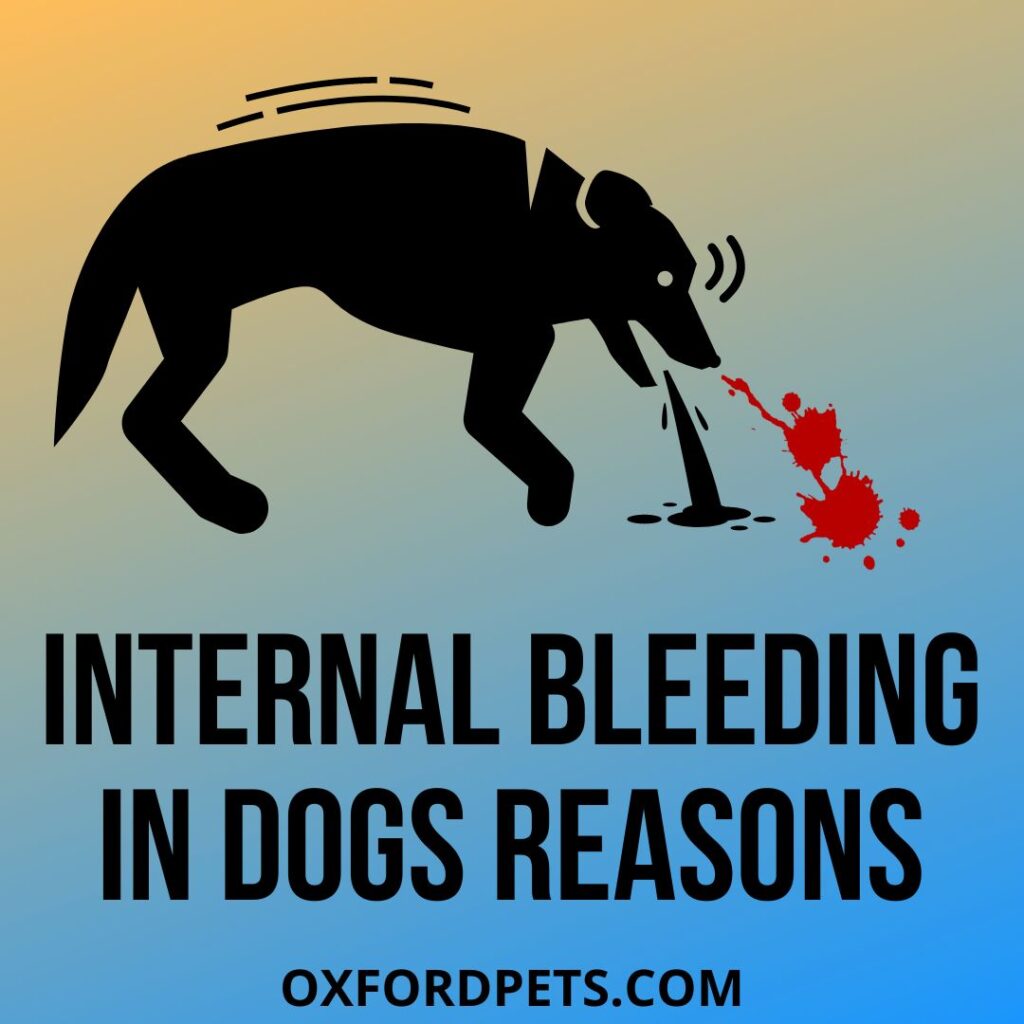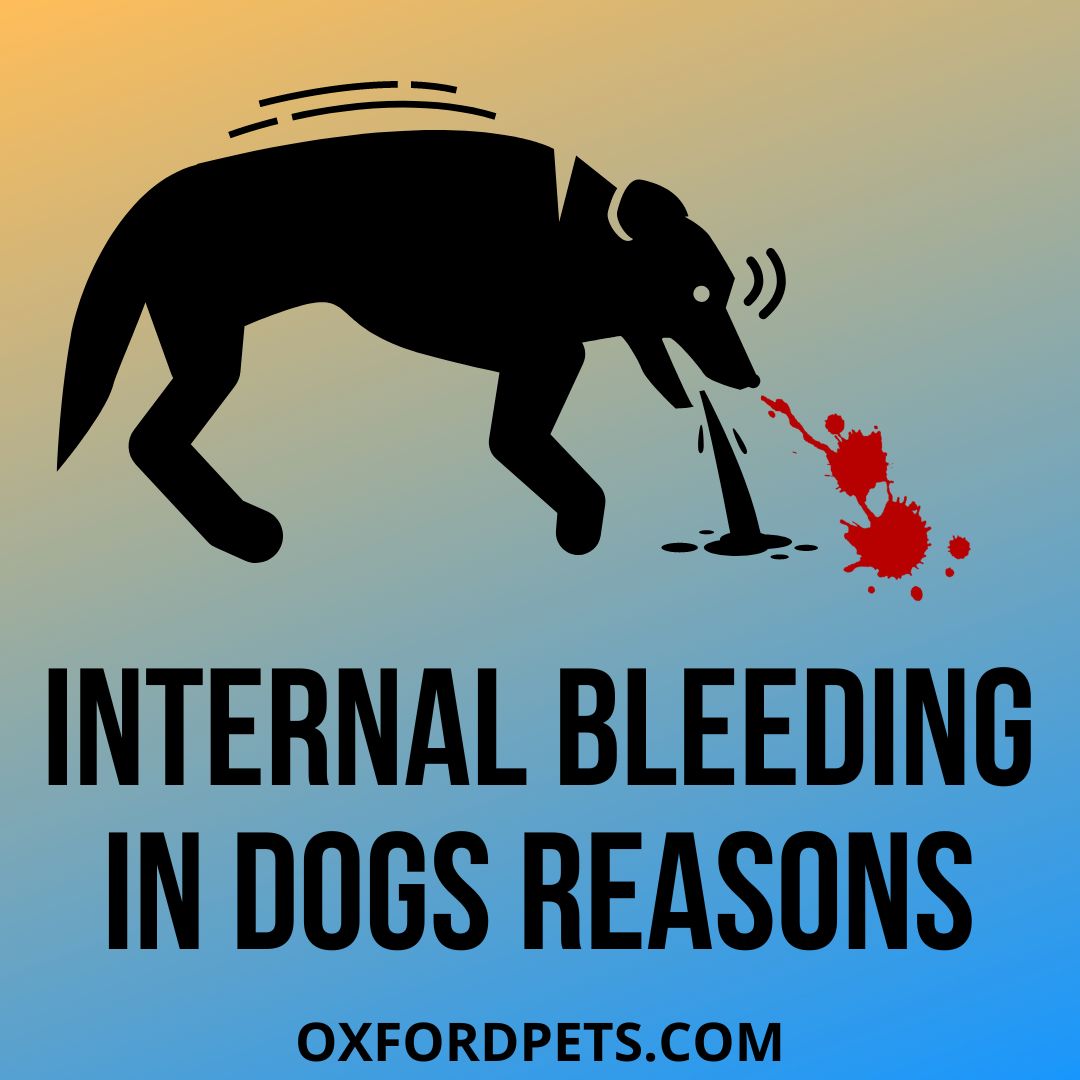Wondering, Why is your dog coughing Blood? Do you see spots of blood in dog vomit while sneezing? Well, this could be a sign of Internal bleeding in canines something that we can’t see. However, external bleeding occurs outside the canine’s body. It is easy to find as the blood flows from the body in the form of a wound, abrasion, or laceration.
Internal bleeding is also known as internal haemorrhage. It happens when a vein or an artery is damaged and the blood gets collected in the body. Internal bleeding in canines can happen in various areas and can occur in organs, and tissues. Moreover, the blood can get filled in cavities of body parts like the abdomen, chest, and head.
The amount of internal bleeding depends on the damage that occurred and how vascular the affected area is. However, the repair mechanism plays an important role here. It involves the blood clotting system. To stop the blood, the blood vessels must spasm so as to mitigate the blood flow in the damaged area.

Contents
- What if my vet suspects internal bleeding?
- How long do dogs live internal bleeding?
- Can I treat my dog’s bloody stool at home?
- What are the first signs of internal bleeding?
- What are the two most common causes of internal bleeding?
- What should I feed my dog after losing blood?
- What home remedy can I give my dog for bloody diarrhoea?
- How do you treat internal bleeding in a dog?
- What drug stops internal bleeding?
- Final words
10 Causes of Internal bleeding in canines
There are different reasons for internal bleeding in dogs. However, cancer is the most common cause of internal bleeding in aged dogshttps://oxfordpets.com/home-remedies-for-dog-scooting/. Hemangiosarcoma is seen in dogs with cancer. This is a type of tumour that is made up of blood vessels and affects the areas in the spleen, heart, and liver.
Still, there are a few other causes of internal bleeding in dogs:
- Abuse
- Poisoning from a rat bite
- Kidney laceration
- Tumours
- Splenic laceration
- Liver laceration
- Bone fracture
- Acquired immune-mediated blood disease
- Attacks by other animals
Symptoms
Here are some of the most common symptoms you will see in a canine with internal bleeding.
Pale gums
- For a normal canine, the gum’s colour is pink.
- Internal bleeding causes the lowering of flowing blood in the body. As a result, the gums become pale.
- Due to the fur, you can only see the changing colour in the gut or the belly.
- You can test this by pressing the gums with your finger.
- When the finger is removed, if you see the pink colour, then the dog is healthy.
- On the other hand, if you see pale colour, then it indicates that the canine is unhealthy
Tachycardia
- Tachycardia is the fast heart rate
- If there is a lot of blood loss from the circulation, then the heart starts to beat fast
- It also results in weakness
Low body temperature
- The body controls the temperature inside.
- As your canine has fur, the surface temperature is a bit lower than the internal temperature
- This is why vets use a rectal thermometer to check your canine’s temperature.
- For a canine, the normal temperature is 100 to 102 degrees Fahrenheit.
- If the temperature is lower or higher than this, then something is wrong.
Anaemia
- This is an outcome of decreased red blood cell count
- If your canine is suffering from internal bleeding, then it is obviously losing the red blood cells.
- To check this, just examine your canine’s gums
- In normal conditions, the gums are pink. However, if there is internal bleeding, then the gums look pale
Bloody discharge
- If you see a bloody discharge from the nose or the skin then this is a severe cause
- Some of the reasons can be associated with tumours. It can be close to the skin and can create an open wound under the fur
- If you see blood coming out from your canine’s nose, then immediately take him to the vet.
Collapse
- If there is the insufficient circulation of blood in the body, then your canine may collapse suddenly.
- This is due to the lack of blood in the lungs and brain.
Bloody stools
- Bloody stool in dogs is an indication of internal bleeding.
- Moreover, it can also be caused by foreign objects
Lethargy
- Lethargy in dogs looks like they do not have the energy to do daily activities
- It also includes not barking at visitors, no excitement for food, sleeping too much, etc.
- This change can occur suddenly and without any warning.
Coughing Blood
- If your canine is coughing blood frequently, then it can be due to internal bleeding
- Coughing is associated with fluids in the lungs. If the coughing increases, the fluids entering the lungs increase.
What if my vet suspects internal bleeding?
The vet can provide oxygen and different fluids to stabilize the condition. If the dog is in pain, the vet will also provide painkillers
If your canine shows symptoms of internal bleeding, take him to the vet asap. Additionally, just wrap your canine with a towel while taking him to the vet.
Do not apply any pressure on his tummy. If your canine has an injury-like an accident, you will need to hospitalise him immediately. Also, if there is a lot of loss of blood, then a blood transfusion is important.
Moreover, 2 blood tests(total solids and haematocrit) can help to know the suspicion. Due to the varied reasons for internal bleeding, vets can get confused with the signs of other illnesses.
Also, vets can take images like ultrasonography of the abdomen or radiography of the chest to find more details.
How long do dogs live internal bleeding?
It can vary from canine to canine. There are canines that live only for a few weeks. Also, there are a few that last more than 6 months.
Can I treat my dog’s bloody stool at home?
Natural treatments and home remedies are helpful for some canines under a doctor’s guidance. The vet may recommend feeding plain boiled rice and chicken. Moreover, there are some cases where it is ok to give canines vitamins, electrolyte drinks, supplements, and canned pumpkins.
What are the first signs of internal bleeding?
Here are the first signs of internal bleeding in dogs:
- Unconsciousness
- Pain at some sites
- Tight abdomen
- More thirst
- Pale skin
- Vomiting
- Nausea
- Breathlessness
What are the two most common causes of internal bleeding?
Minimum trauma can cause internal bleeding in dogs. One of the most common bleeding disorders is Haemophilia and Von Willebrand’s disease.
What should I feed my dog after losing blood?
Initially, you can give your canine canned sardines with regular food, green veggies, beef liver, raw egg yolk, etc. in addition, Vitamin C can help your canine to absorb iron from the intestinal tract.
What home remedy can I give my dog for bloody diarrhoea?
A flavourless diet for a couple of days can help you resolve your canine’s problem. You can give plain-cooked rice with chicken and plain pumpkin to your canoe. This will make your canine feel better. Once the canine starts coming back to its normal health, then you can reintroduce the regular food.
How do you treat internal bleeding in a dog?
The answer to this question is Surgery. It is considered to be the last and emergency process if your dog is bleeding internally.
What drug stops internal bleeding?
Tranexamic acid is given to stop internal bleeding. Moreover, it also reduces the amount of blood the body loses.
Final words
Internal bleeding in dogs is a very serious matter. If your canine has a serious injury like being hit by a car, you must take your canine to the vet immediately. The vet will rule out internal bleeding or find it and will give proper treatment.
Older canines have more chances of internal bleeding from tumours. However, all ages of canines can have internal bleeding from toxins and trauma.
I hope you enjoyed the article. I will be back soon with more interesting and informative pieces of writing. Till then, stay connected. Thank you.
